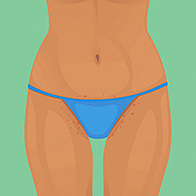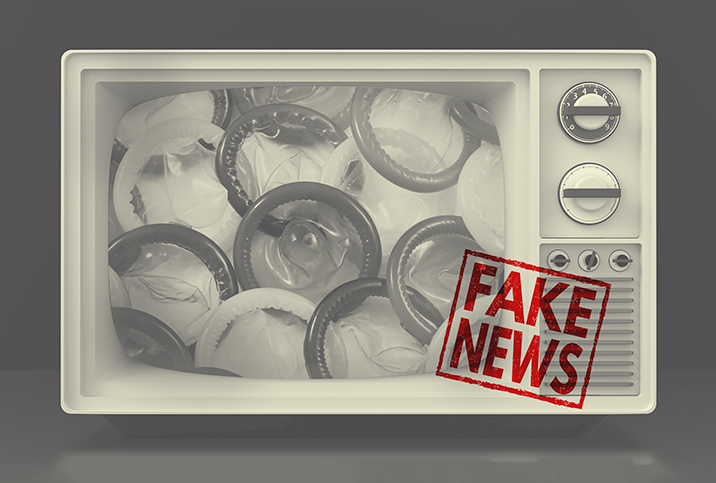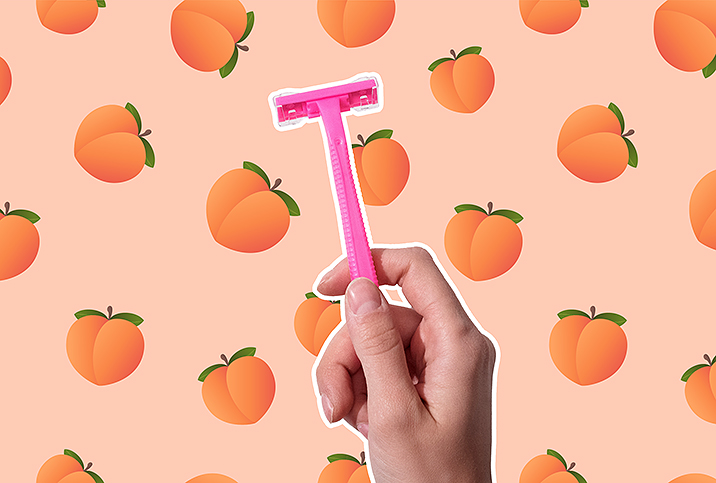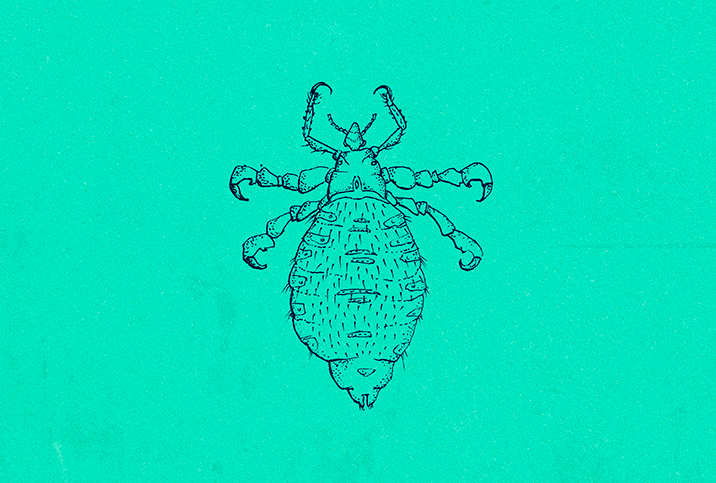Razor Bumps or STD: What Your Itching or Burning Could Mean

There are all kinds of reasons your bikini line and below may be itchy, and each has different solutions. And while persistent itching could be a consequence of a shaving mishap, but in the back of your mind, you may wonder if it's the first sign of a sexually transmitted infection or disease (STI/STD).
Bumps and burns
Julia Bennett, director of digital education and learning strategy at Planned Parenthood Federation of America, explained bumps of any color or sensitivity aren't necessarily signs of an STI. In fact, she said no symptoms at all is a more common symptom of many STIs.
"Many people who have an STI don't know it since most STIs have no symptoms," she said. "But in some cases, people can experience symptoms such as sores or bumps on and around their genitals, thighs or butt cheeks. It's important to note that all of these symptoms can also be caused by things that aren't STIs, like pimples, UTIs, razor bumps, etc."
Amy Roskin, M.D., an OB-GYN and the chief medical officer at Seven Starling, a mental healthcare platform based in New York City, gave a guide to differentiating visually between ingrown hairs and STI symptoms.
"If you get an ingrown hair after shaving, that can be a small, red, slightly tender lesion," she said. "But if you notice a small, painful blister or a cluster of small blisters, that could be herpes. Genital warts can be small, irregularly shaped bumps. They are generally painless and may have a rough or whitish surface."
'It's important to note that all of these symptoms can also be caused by things that aren't STIs, like pimples, UTIs, razor bumps, etcetera.'
Roskin further outlined viral causes, aside from herpes, for bumps in the genital area.
"Another cause of small bumps that is less common is something called molluscum contagiosum," she said. "These bumps are usually painless and often have a dimple or divot in the center. The bumps usually go away on their own, but this can take months to a year. Your doctor can also remove them."
Whether the cause is STI- or shaving-related, Roskin said the heart of the issue is skin deep—which may be deeper and more dangerous than you think.
"If you have razor bumps or skin irritation, you may have microtears in the skin," she added. "This might make you more vulnerable to an infection that can be spread through skin contact. This is true in any area on the body, and open cuts or sores can increase the risk of infection."
No scratching or scrubbing
Even if you don't have an STI, microscopic cuts from shaving (and scratching) near the genitals are the perfect entrance for one. Adrienne Crowe, a certified nurse midwife in Denver (and the author's mother), laid out the next steps for dealing with irritated skin.
"Whatever's the cause, scratching will only worsen it," she said. "Your nails aid in the transfer of bacteria, which can turn a bad case into a worse one. Take a sitz bath or a regular warm bath. But don't scrub, just pat gently with a freshly laundered cloth."
A sitz bath is a warm, shallow bath with half a cup of Epsom salts. It's typically intended to soothe hemorrhoids and ease swelling in the anal or genital area. It's not entirely necessary to buy a sitz bath bowl. If a conventional tub is the only available option, increase the amount of Epsom salts.
More important than the shape of your tub is sterility. Clean the tub first and always use a freshly cleaned towel. A dry hand towel that was already hanging in the bathroom could carry bacteria, either from past use or spray from flushing an open toilet.
As Crowe explained, rubbing the affected, rashed, area can further spread bacteria, so gently patting everything dry is imperative. After a warm Epsom bath, apply any ointments prescribed, assuming you've been to the doctor.
If your itchy bumps are, in fact, razor bumps, Roskin offered some strategies to avoid them in the future.
"Shave at the end of a shower, don't dry shave," she suggested. "Use shaving cream or gel. This will reduce friction and associated skin irritation. Use a sharp, clean razor, never a dull one. Shave in the direction of the hair growth, not against it.
"Exfoliating prior to shaving works well for some people to avoid ingrown hairs," Roskin continued. "It's thought that exfoliation reduces the risk of the hair getting trapped within the follicle. The ideal interval for shaving is different for each person, [but] the general recommendation is to wait two to three days."
Even with proper preparation, shaving may not be the best form of hair removal. Waxing, laser hair removal and hair removal creams are most common, but hair erasers are gaining popularity. Hair erasers operate a bit like sandpaper, so this might not be the best option for people with particularly sensitive skin. However, you can try a hair eraser on less delicate body hair, like on the arms or legs, post-shower.
Period sensitivity
Remember, the menstrual cycle can interfere with skin texture, sensitivity and appearance. Whether it's a full-blown hypersensitivity to certain hormones or your body adapting to diminished estrogen (which thickens and plumps skin), your skin may be especially sensitive leading up to your period or during perimenopause. Naturally produced histamines, whether released by the body as a response to allergens or those found in foods, can also cause itching.
While discomfort might be the factor that sends you into action to visit a healthcare provider, remember that some genital bumps resulting from STIs can also be painless. Take the initiative and have any persistent issues or changes inspected by your healthcare provider.




















